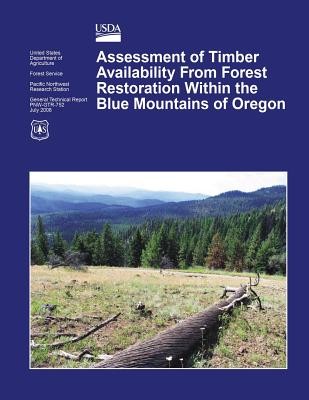
- We will send in 10–14 business days.
- Author: U S Department of Agriculture
- Publisher: CreateSpace Independent Publishing Platform
- ISBN-10: 1508756422
- ISBN-13: 9781508756422
- Format: 21.6 x 28 x 0.4 cm, minkšti viršeliai
- Language: English
- SAVE -10% with code: EXTRA
Assessment of Timber Availability From Forest Restoration Within the Blue Mountains of Oregon (e-book) (used book) | bookbook.eu
Reviews
Description
Changes in forest management have detrimentally affected the economic health of small communities in the Blue Mountain region of Oregon over the past few decades. A build-up of small trees threatens the ecological health of these forests and increases wildland fire hazard. Hoping to boost their economies and also restore these forests, local leaders are interested in the economic value of timber that might be available from thinning treatments on these lands. This study identified densely stocked stands where thinning could provide a reliable source of wood, and examined the quantity, distribution, and economic value of the resulting timber for 5.5 million acres of national forest lands in eastern Oregon. Our findings verified local land managers' observations that the land base to support timber harvest targets in the region is smaller than anticipated in the past. Legal restrictions and current management practices have reduced the acreage available for harvest and mechanical restoration. Additionally, we found that on lands where active forestry is allowable, thinning of most densely stocked stands would not be economically viable. Findings from this analysis can help establish a common understanding of Blue Mountains vegetative and economic conditions for managers trying to restore the region's national forests.
EXTRA 10 % discount with code: EXTRA
The promotion ends in 22d.02:56:28
The discount code is valid when purchasing from 10 €. Discounts do not stack.
- Author: U S Department of Agriculture
- Publisher: CreateSpace Independent Publishing Platform
- ISBN-10: 1508756422
- ISBN-13: 9781508756422
- Format: 21.6 x 28 x 0.4 cm, minkšti viršeliai
- Language: English English
Changes in forest management have detrimentally affected the economic health of small communities in the Blue Mountain region of Oregon over the past few decades. A build-up of small trees threatens the ecological health of these forests and increases wildland fire hazard. Hoping to boost their economies and also restore these forests, local leaders are interested in the economic value of timber that might be available from thinning treatments on these lands. This study identified densely stocked stands where thinning could provide a reliable source of wood, and examined the quantity, distribution, and economic value of the resulting timber for 5.5 million acres of national forest lands in eastern Oregon. Our findings verified local land managers' observations that the land base to support timber harvest targets in the region is smaller than anticipated in the past. Legal restrictions and current management practices have reduced the acreage available for harvest and mechanical restoration. Additionally, we found that on lands where active forestry is allowable, thinning of most densely stocked stands would not be economically viable. Findings from this analysis can help establish a common understanding of Blue Mountains vegetative and economic conditions for managers trying to restore the region's national forests.


Reviews